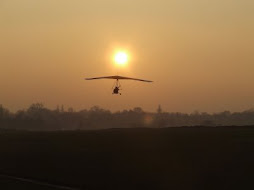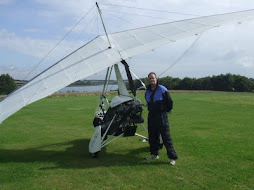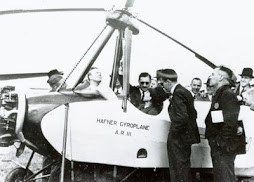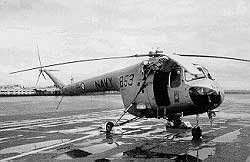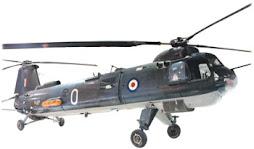I started from the premise that the advent of the microlight aeroplane has democratised private flying. During my recent Viva (an oral exam where doctors grilled me on the content of my first written submissions) it became clear to us all that my definition of democracy was problematic. Unlike other democratised technologies, like the telephone, the car, the internet, etc, private flying has not been broadly adopted and has not become part of everyday life for ordinary people, who usually only experience flight as passengers.
I can argue that the technology, the microlight, has democratised private flying, but cannot really argue that it is a democratised technology more broadly, and I suppose would only really be able to do so if having a microlight was as commonplace as having a car.
We talk in history and social science circles about the idea of "imaginaries", which is one of those detestable academic words which doesn't exist in the real world, but which has been coined to mean something not easily defined in ordinary life. An imaginary (an abstract noun, not an adjective,...so, a thing, but one you cannot see) is, broadly speaking, an idea that a society has about itself. For a better definition read this excellent article from one of several academic writers I admire, who believe that academic writing must be easily understood. Academic writing has a reputation for being elitist and often being deliberately obtuse (when I could just have said unclear!).
I am exploring an "imaginary" which seems to have existed since the 1920s, at least, and which is most commonly experienced in lightweight news reporting about new innovations in aviation, especially small, non-commercial flying machines:
Will this invention mean that finally
we will "all" have a our own flying cars?
(or similar)
For instance, on Facebook there is a page, "Its [sic] 2020, where's my flying car", another meme bemoans the fact that while we expected by 2020 to all be flying our own cars, in fact under Covid nobody - not even the lines of pictured passenger planes- is flying.
The implication of this is that the flying car is something which has long been sought, even if we haven't given it much thought, but have only vaguely imagined was being worked on by the boffins. I am trying to trace the origin of the notion that there might one day come a time when all of us might have a flying machine with the utility of the car. I don't say that we have ever actually believed that it would happen, necessarily; only that somewhere deep in our collective psyche, un-selfconsciously and perhaps never critically examined, we have a notion that it would be wonderful to have a machine in the garage which could take us anywhere. It is almost like a shared joke, and it makes me think of those moments when a whole audience laughs having suddenly realised the punch-line before the comedian delivers it.
Advertising for the smaller aeroplanes, which might be owned by would-be pilots equated the aeroplane to the car. For instance, in the 1920s de Havilland ran adverts which talked in terms of aeroplanes being easily "driven", or being as economic as driving a car, or that they could be towed home and parked in an "ordinary" garage.
The fact that few people had cars at the time and that until the 1930s it was uncommon for houses to be built with garages says quite a lot about who these adverts were actually pitched at, and that makes the subject of my first chapter especially interesting to me. Why was it that the Royal Aero Club (modelled on Royal Automobile Club, incidentally but not co-incidentally) made it a qualifying test at the start of their 1920s competitions to find the idea light aeroplane, that it must be capable of being passed through a gap equivalent in dimensions to the doorway of an "ordinary garage"?
(image included with the kind permission of Mr A. Ord-Hume)
I am not going to give you the punchline now, because that chapter is due to be published by the Deutsches Museum in the autumn, and actually the article isn't about the imaginary of flying cars. But it is all part of the idea of the aeroplane becoming something that ordinary people might aspire to own and fly themselves.
One Man, One Vote
...redefining what we mean by democracy and technology
When I started writing this blog entry it was as a response to people's attitudes to Covid and to the restrictions on flying, and to my realisation in recent weeks, that I needed to completely re-define democracy in relation to flying. I think I will have to write a separate blog on that now. Suffice it to say that previously I saw it in terms of "One man, one vote".....and private flying as the ability of the individual to own a plane and fly it. Now I think I need to see the whole question of aeroplane operation from the point of view of "the people" more broadly. Covid has shown that there is a tension between the libertarian, right wing position, which previously I had seen as a democratising, autonomous one, and the needs of the wider community.













